From Fine art to Commercial art: Celebrating Ranen Ayan Dutt
From Fine art to Commercial art: Celebrating Ranen Ayan Dutt
From Fine art to Commercial art: Celebrating Ranen Ayan Dutt
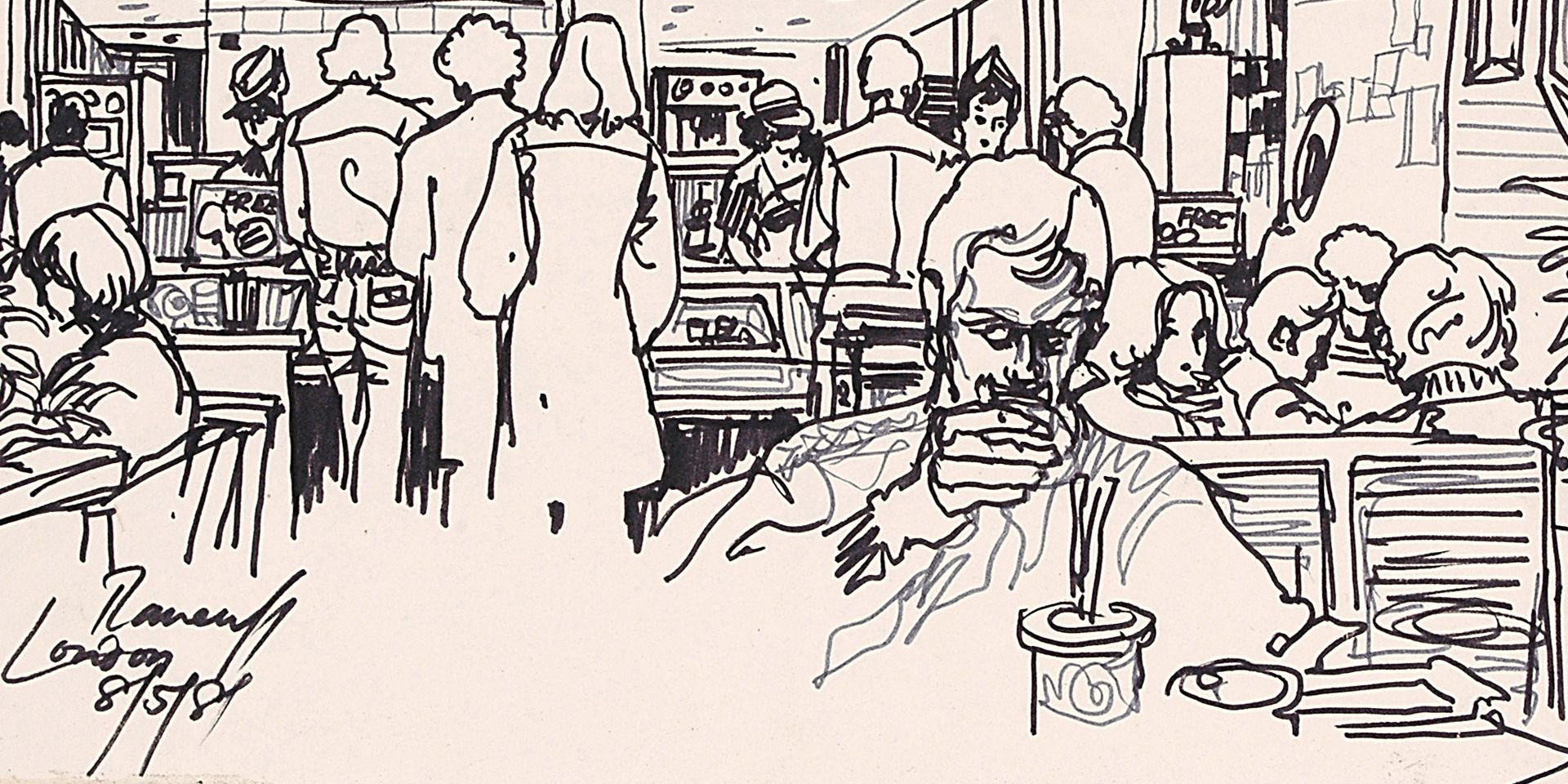
Ranen Ayan Dutt, London (sketch) (detail), 1981, 10.2 X 15.2 in. Collection: DAG
Ranen Ayan Dutt, a distinguished painter, illustrator, muralist, and graphic artist, left an indelible mark on the art world with his versatile talents.
Born on November 24, 1927, in Sylhet (in present-day Bangladesh), Dutt's artistic journey was shaped by his early years in pre-Partition East Bengal and the profound influence of Abanindranath Tagore and Jamini Roy. His career spanned various domains, from commercial art to fine art, seamlessly blending the two. In retirement for several years, the artist passed away on the evening of 3 March, 2024.
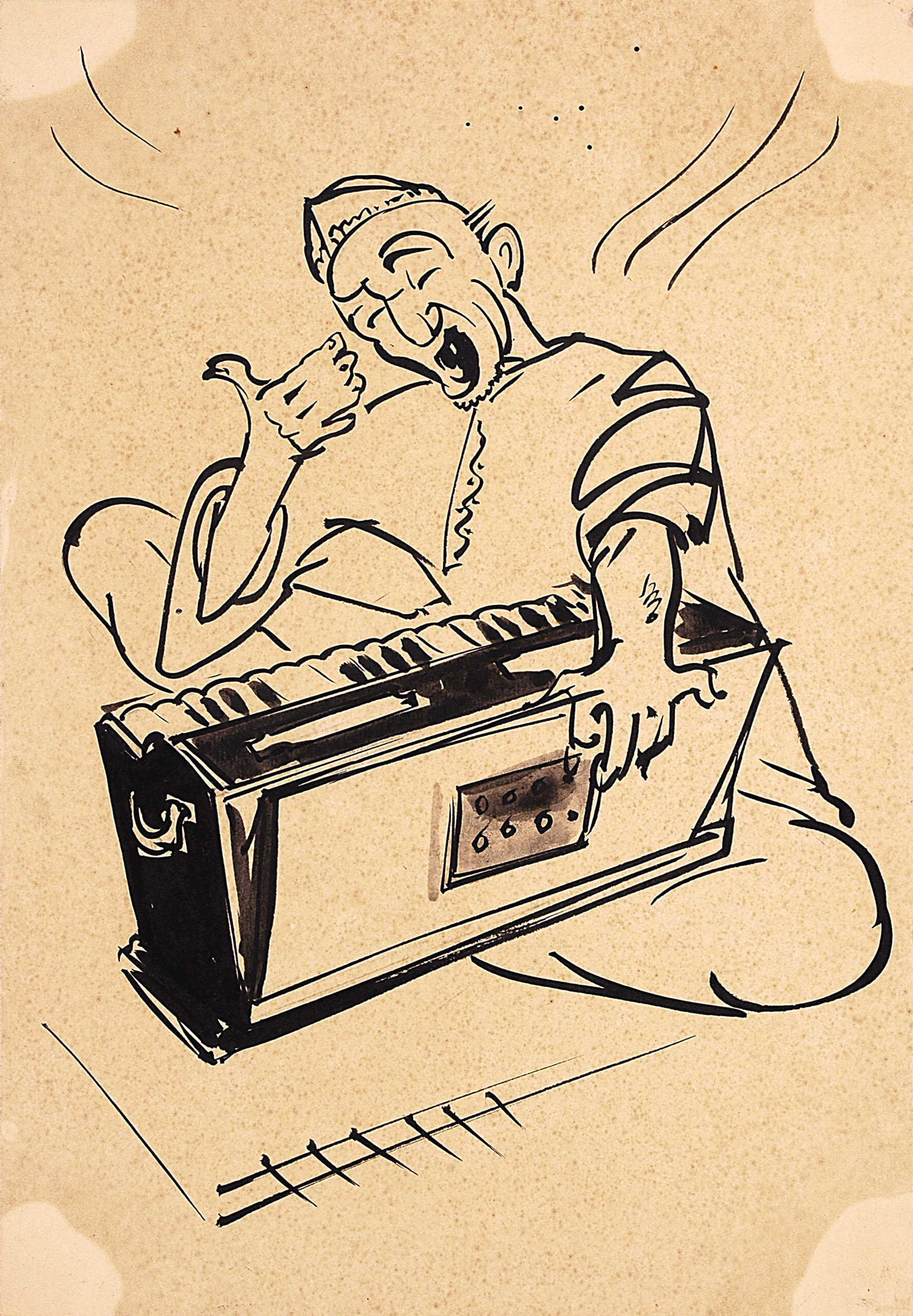
|
Ranen Ayan Dutt, Untitled (musician), 10.0 X 6.7 in. Collection: DAG |
Dutt's artistic prowess shone through his work as an art director at Stronachs India and later as the chief art director at J. Walter Thompson (J. W. T.) in Kolkata. Over two decades, he crafted iconic campaigns for brands like Tea Board, Tata Steel, Jabakusum oil, and Wills. Despite his success in advertising, painting remained his true passion. Known for his watercolours and sketches, Dutt's notable works include scenes of foreign views (of London city-life, especially) as well as Indian landscapes. In these views, the playful and cosmopolitan imagination of Dutt, having imbibed the urbane world of street life in his native Calcutta (now Kolkata), is allowed to blossom.
One of his significant contributions was designing the poster for Tapan Sinha's film Kabuliwala in 1957. His innovative approach to creating the poster as a cut-out without hand-drawing exemplified his artistic ingenuity. Beyond painting and advertising, Dutt ventured into architecture without formal training, establishing R. A. D. Associates in 1974.
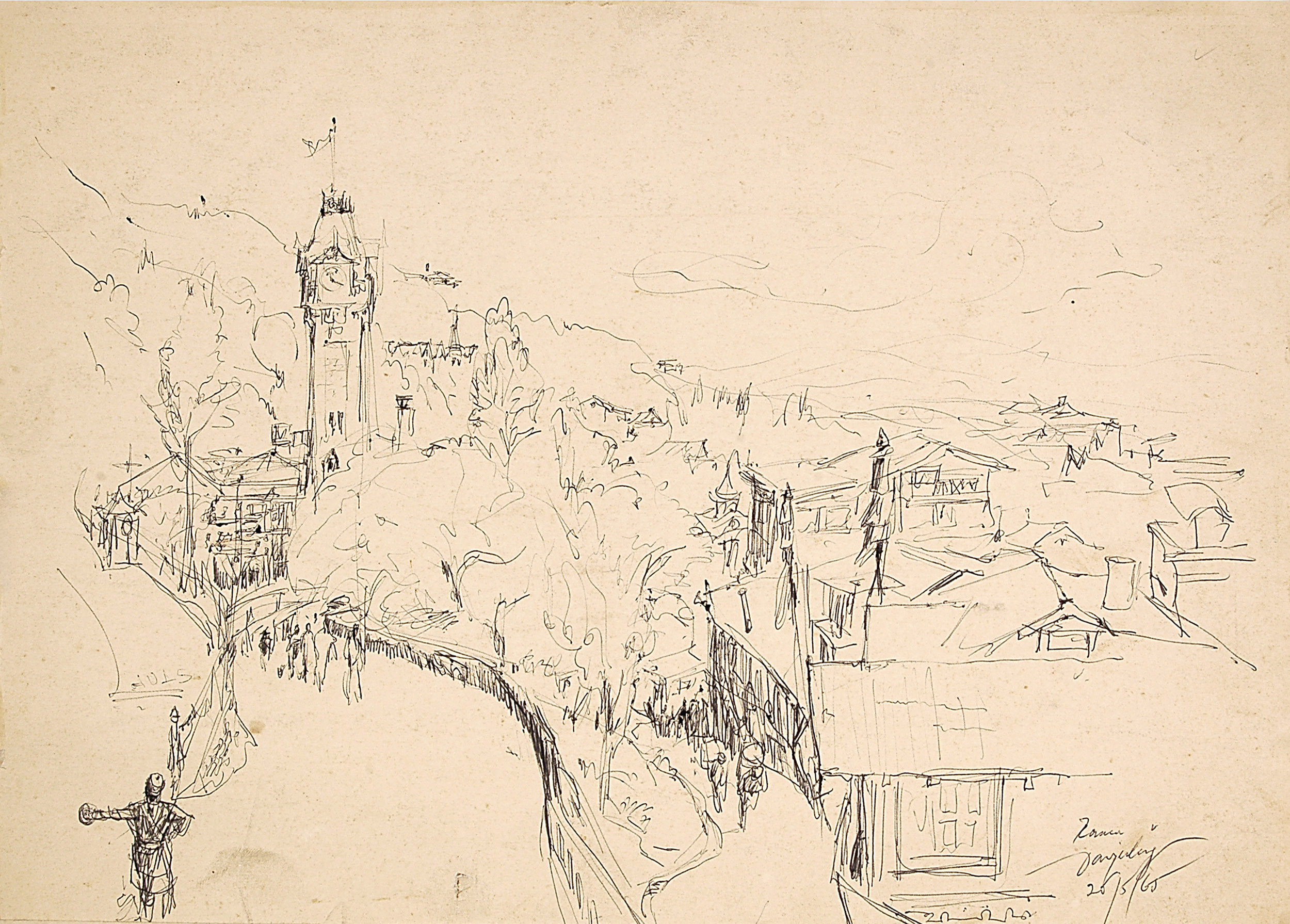
Ranen Ayan Dutt, Darjeeling (sketch), 1965, 10.2 X 14.2 in. Collection: DAG
Ranen Ayan Dutt's legacy extends beyond his artistic endeavours; he was awarded a D. Litt by Rabindra Bharati University in 1999 for his remarkable contributions to the arts. His passing marks the end of an era in the art world but leaves behind a rich tapestry of creativity and inspiration for future generations to cherish and draw from.
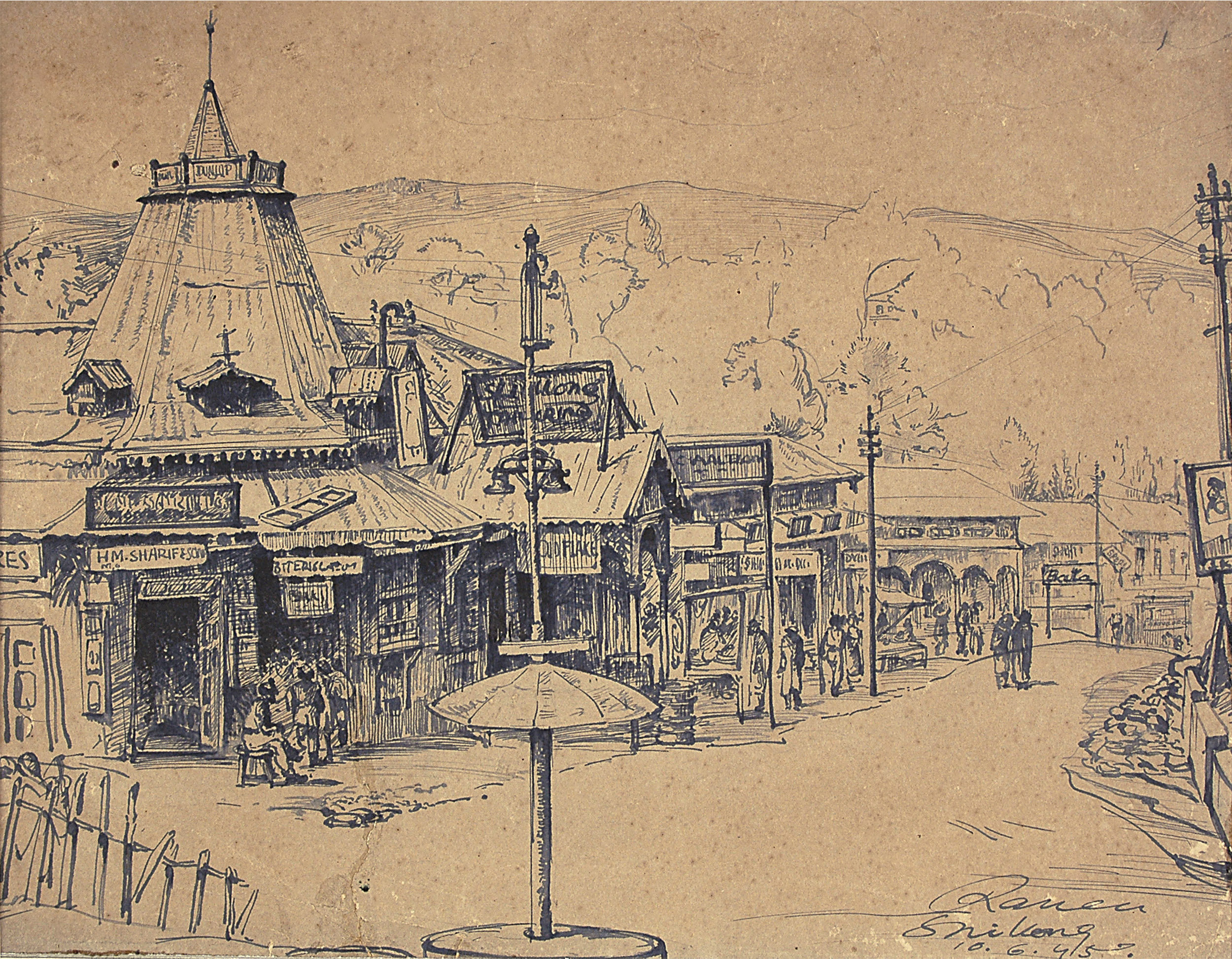
Ranen Ayan Dutt, Shillong (sketch), 1945, 9.7 X 12.7 in. Collection: DAG
In the first issue of Sundaram, an art magazine edited by the enigmatic but influential figure of Shuvo Tagore, the most accomplished critic of commercial art in Bengal, Raghunath Goswami, wrote an essay on Dutta’s art. It serves as an early conspectus on Dutt's career (when the artist was just shy of his thirtieth birthday) and focuses on the confluence his art brought about in the discrete worlds of fine and commercial art at the time. A translated excerpt appears below:
‘Ranen Dutt joined the Government College of Art and Crafts, Calcutta after passing his matriculation exams. In his uneventful life thus far, entering the art college brought about an enlightening wave of change. Numerous copies of masterpieces were widely available for study in the art school, along with expert pedagogues, a variety of mediums to explore as well as materials to experiment with; and the wide-ranging conversations to be had there put Dutta’s world in a creative churn. The young man who struggled by himself in his dark and stuffy room at Jhamapukur could now taste the heady thrill of freedom in this new environment. From the very beginning of his artistic career, therefore, one can sense the joy of freedom animating his work—and it’s probably the same instinct that makes so much of his work so life-affirming. I believe this life-affirming quality gives his work a unique form and distinguishes it from the weak and emotionless work churned out by the young students and artists seeking to make their mark.
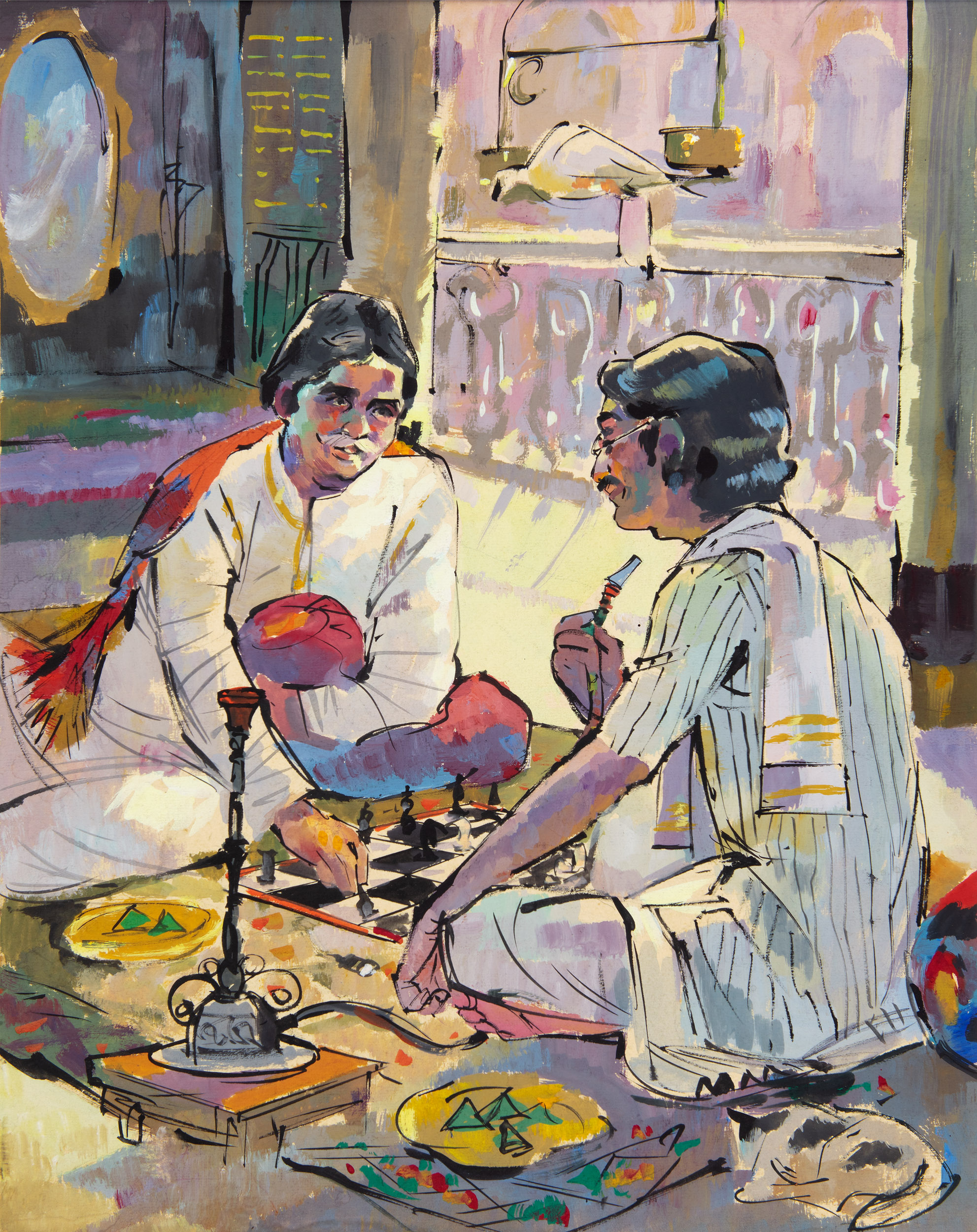
|
Ranen Ayan Dutt, Untitled, Gouache and ink on mount board, 16.2 X 12.7 in. Collection: DAG |
…Ranen Ayan Dutt wasn’t interested in the rote academic curriculum practiced at the art school. He wanted to get out and sketch more. This was a ruling passion among the art school students of the day—to get out in the streets or outside Calcutta to paint or draw. Dutta also wanted to be a part of these plans to go out and paint. But where would he find the money to do it? He was still struggling with his meagre resources. He would take a second-class tram ticket to his art school for six paise and spend the same amount on lunch. He would be given a total of two annas from home as his daily allowance. Let alone a trip outside Calcutta, he barely had enough money to buy paint or brushes. But that did not mean his work would come to a standstill. It only meant that he wasn’t able to paint the same subjects as the others—like the sea at Puri, a view of the Himalayan peaks or the sandbanks on the Brahmaputra river. Instead, since he had to paint something else, he settled for views around College Street and Mechobazar (or, Machuabazar), which were right next door. Then there were the canal-scoured lanes of Maniktala too. The presence of dockyard workers, boats and warehouse labourers gave the place a scent of distant, far-away lands. When the dying rays of an evening sun fell upon the dilapidated houses in Mechobazar the scene gained an ineffable power that only the artist managed to capture. The busy lanes of College Street, piled with vehicles and innumerable men and women at the crossing, the dovecotes on rooftops inhabited by passing pigeons, a small figure of Hanuman wearing sindoor (vermillion mark) and lodged at the foot of a sprawling banyan tree with cement-blocked trunks, an overworked horse tied to a cart that had been reduced to rag and bones: all these sights presented themselves afresh to the young artist’s eye…

Ranen Ayan Dutt, London (sketch), 1981, 10.2 X 15.2 in. Collection: DAG
Towards the end of his tenure at the art school, Ranen Ayan met and fell under the influence of the famous artist Annada Munshi, which took him into the orbit of commercial art. He worked at Munshi’s studio ‘Prakashika’ for a few days and his association with the latter opened up several avenues for him. When it came to advertising art, Annada Munshi became his artistic guru. The fine arts student in Ranen Ayan Dutt entered the world of commercial art with an open-mind and a curious outlook, but practically a stranger. While working with his mentor, Dutt realised that the applied arts of advertising offered as many attractive challenges as the formal fine arts practice taught to him in college. Soon after leaving college he joined the Publicity Forum as chief artist and took up commercial art as a career.’


